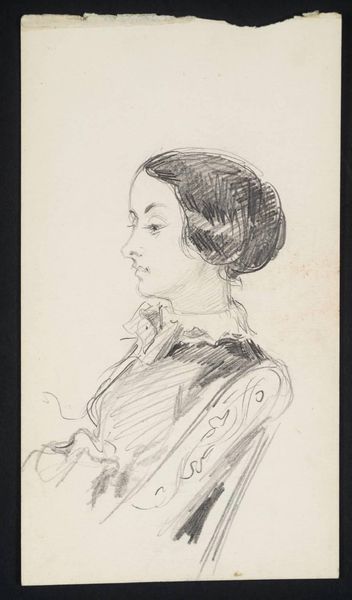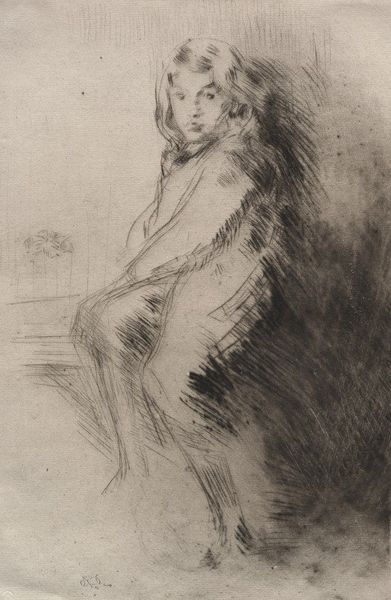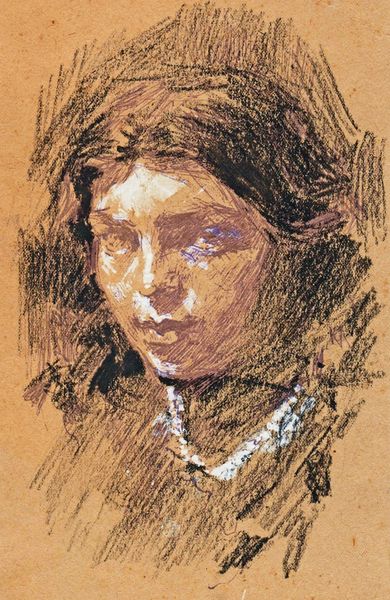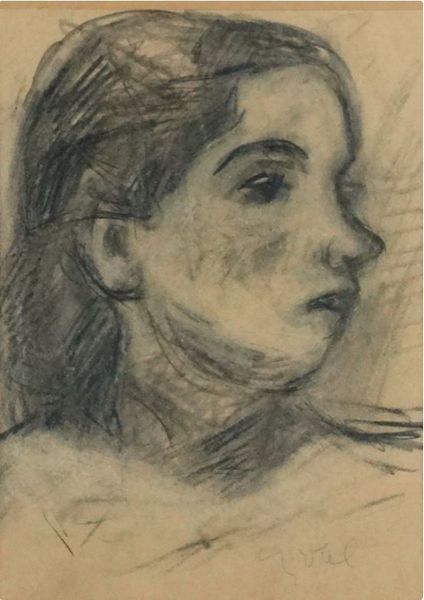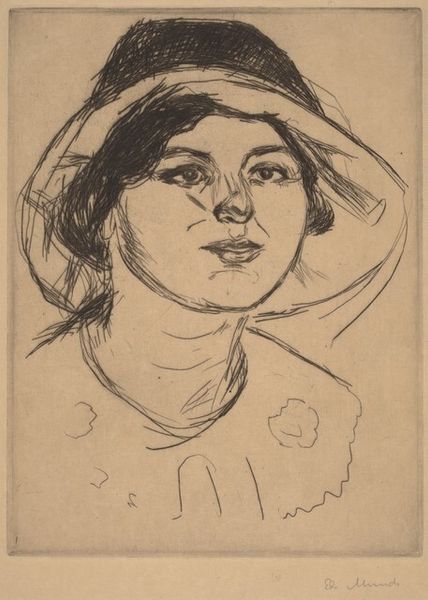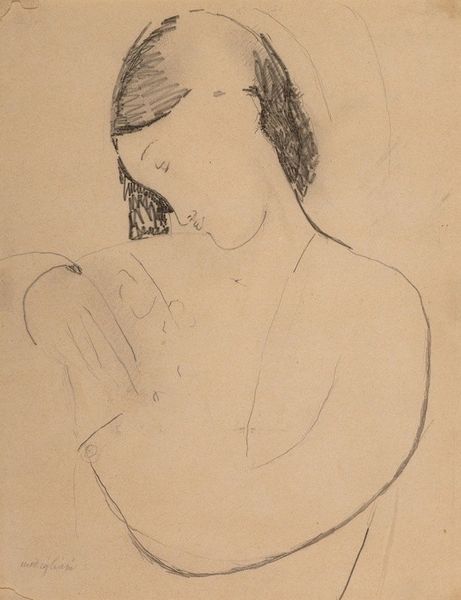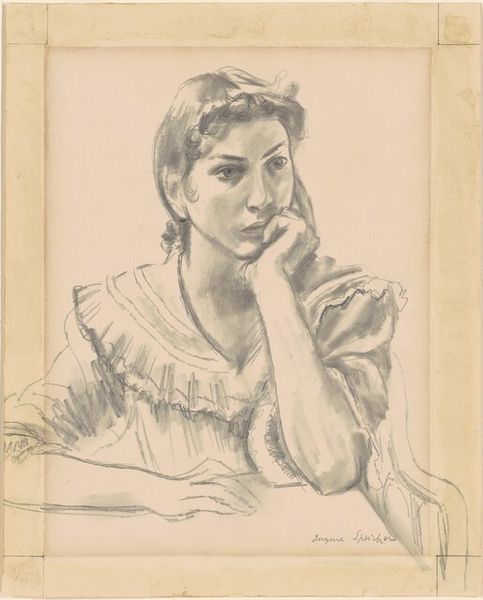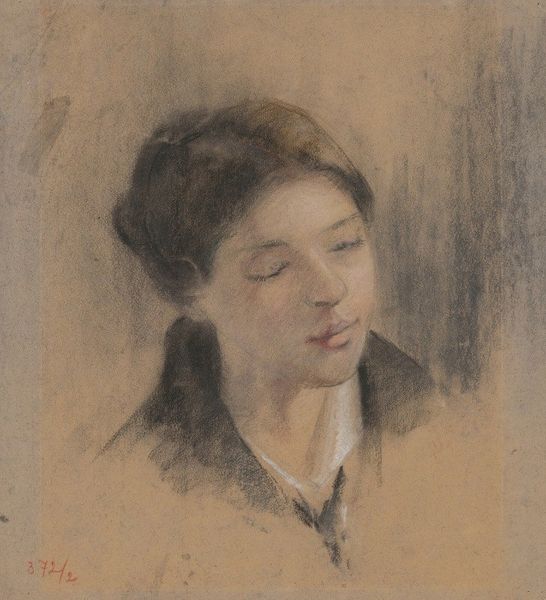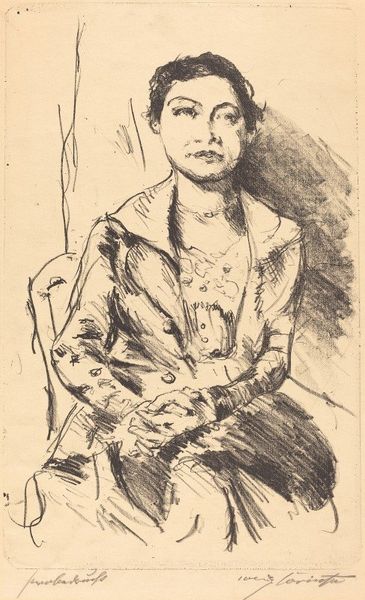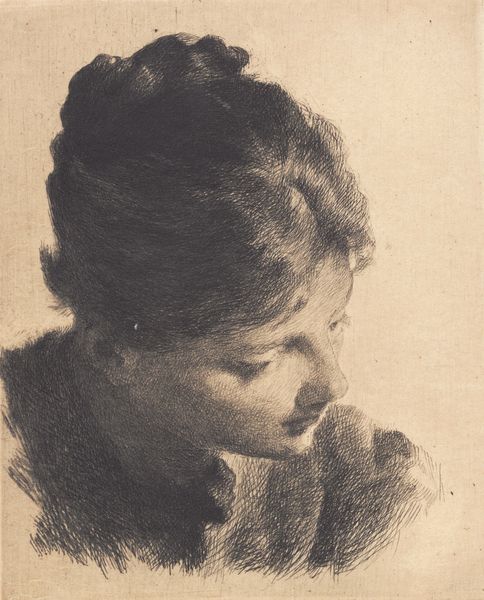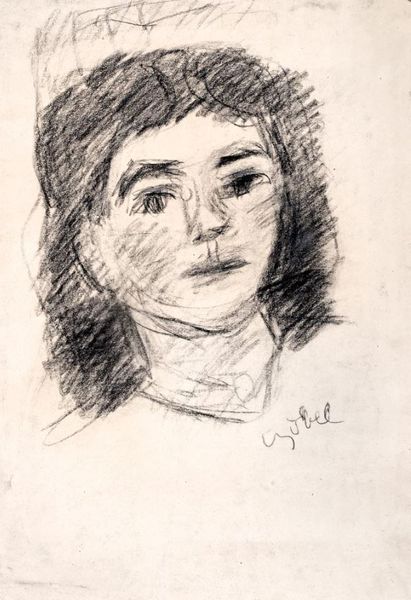
drawing, pastel
#
portrait
#
drawing
#
expressionism
#
portrait drawing
#
pastel
#
portrait art
Copyright: Public Domain: Artvee
Curator: This pastel drawing, titled "Spaniard," was created by Arnold Peter Weisz-Kubínčan around 1930. Editor: The first thing that strikes me is its melancholy mood. There’s a quiet drama to the subject's averted gaze. Curator: I think that’s heightened by the material itself. Pastel lends itself to softness, but it can also achieve dramatic contrasts. The smudging here, how the black bleeds slightly into the skin tones, emphasizes the raw quality of the work, which can relate to expressionist movements. Editor: Absolutely, and it resonates with larger dialogues around representation of women during that time, especially in the context of interwar Europe. Who was this woman? Was the title given by the artist, and how does the "Spaniard" identity play into the power dynamics? Curator: The visible mark-making and subtle textures, though, highlight the artist's labor, drawing attention to the hand that created it and disrupting notions of effortless artistic genius, even pointing out some commercialized exoticism that was more accessible through printmaking and reproduced art at the time. Editor: We can also consider the concept of portraiture. Instead of idealization, there's an almost confrontational rawness in its execution, the vulnerability exposed. Is the sitter complicit in this display, or does it challenge viewers to contemplate their own expectations? The piece is, on its own, raising very big existential questions about the artifice and gaze. Curator: I'm also fascinated by how the artist’s choices manifest through accessible material and reproducible means that bring this conversation to a bigger stage: Pastel, a common medium. Paper, a ground that, with mass production of goods and materials, speaks to broader trends of production and consumption that go far beyond studio practice. Editor: Exactly. By investigating the material, the labor, and, obviously, the gaze, we begin to piece together a richer and deeper cultural and artistic interpretation of both its original context, the artist’s biography, and our current critical one. Curator: Precisely. Considering this dialogue can help to illuminate previously unexplored, potentially radical layers about works like this one. Editor: Right. I’ll certainly never see pastels in the same light again!
Comments
No comments
Be the first to comment and join the conversation on the ultimate creative platform.

